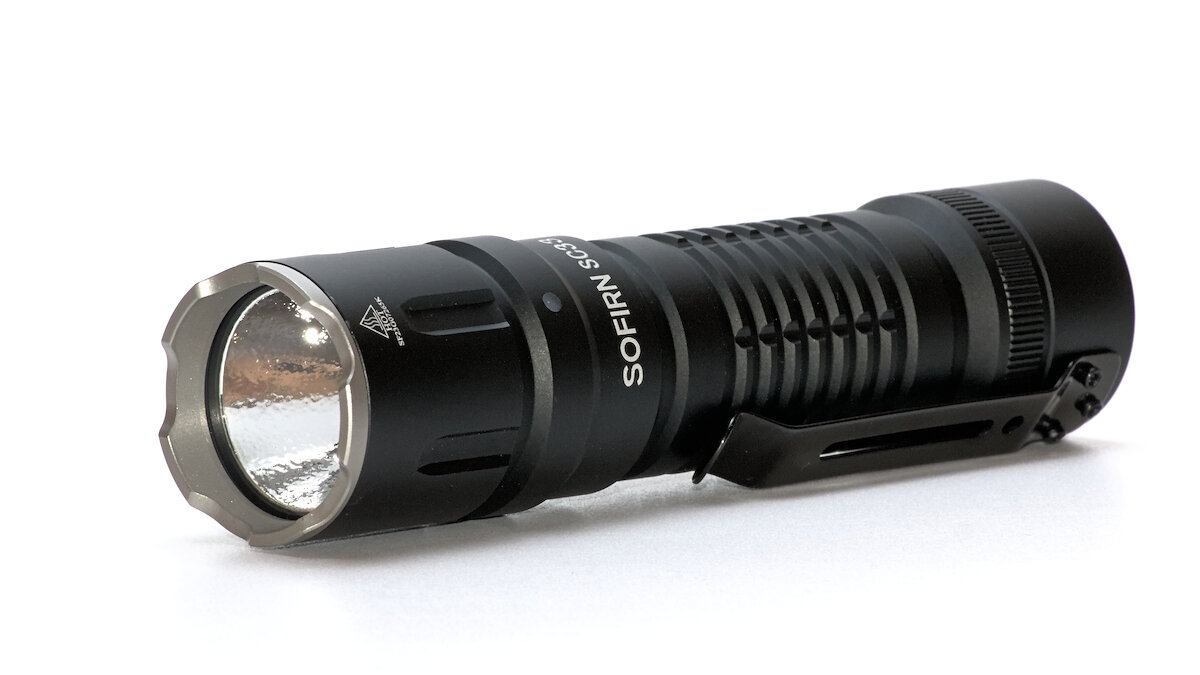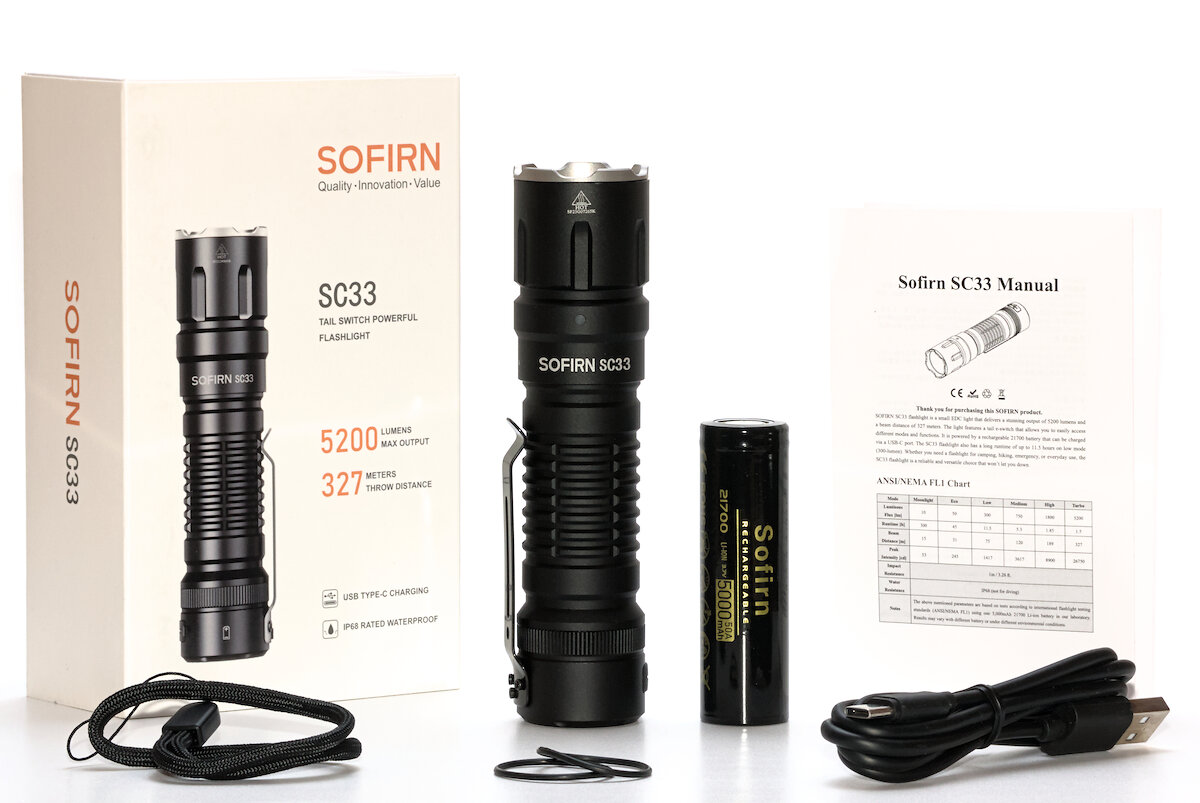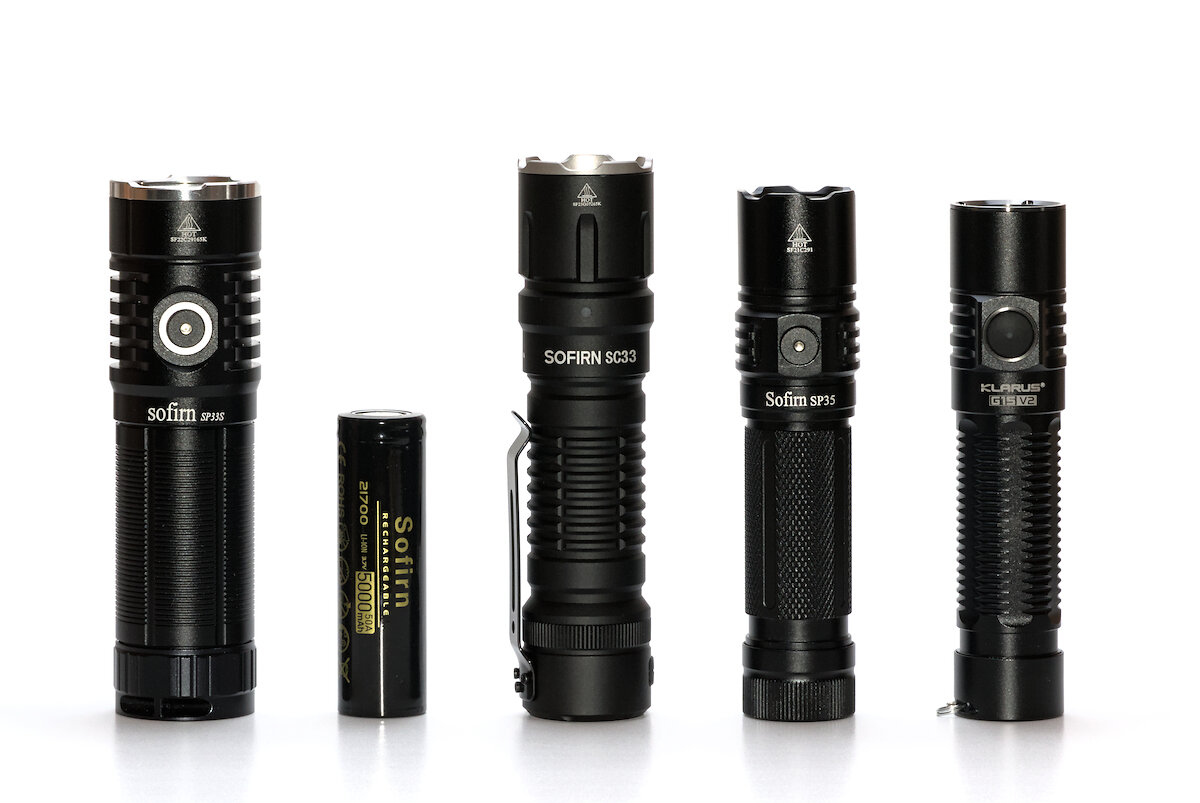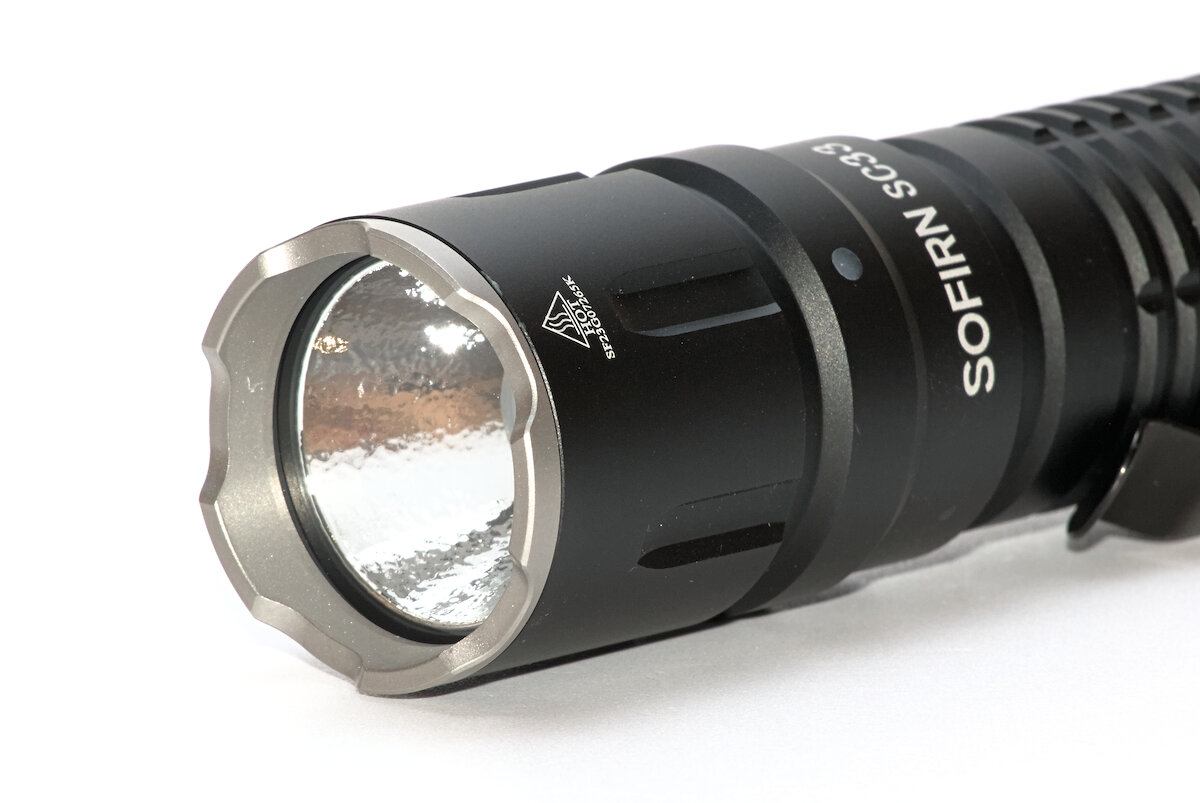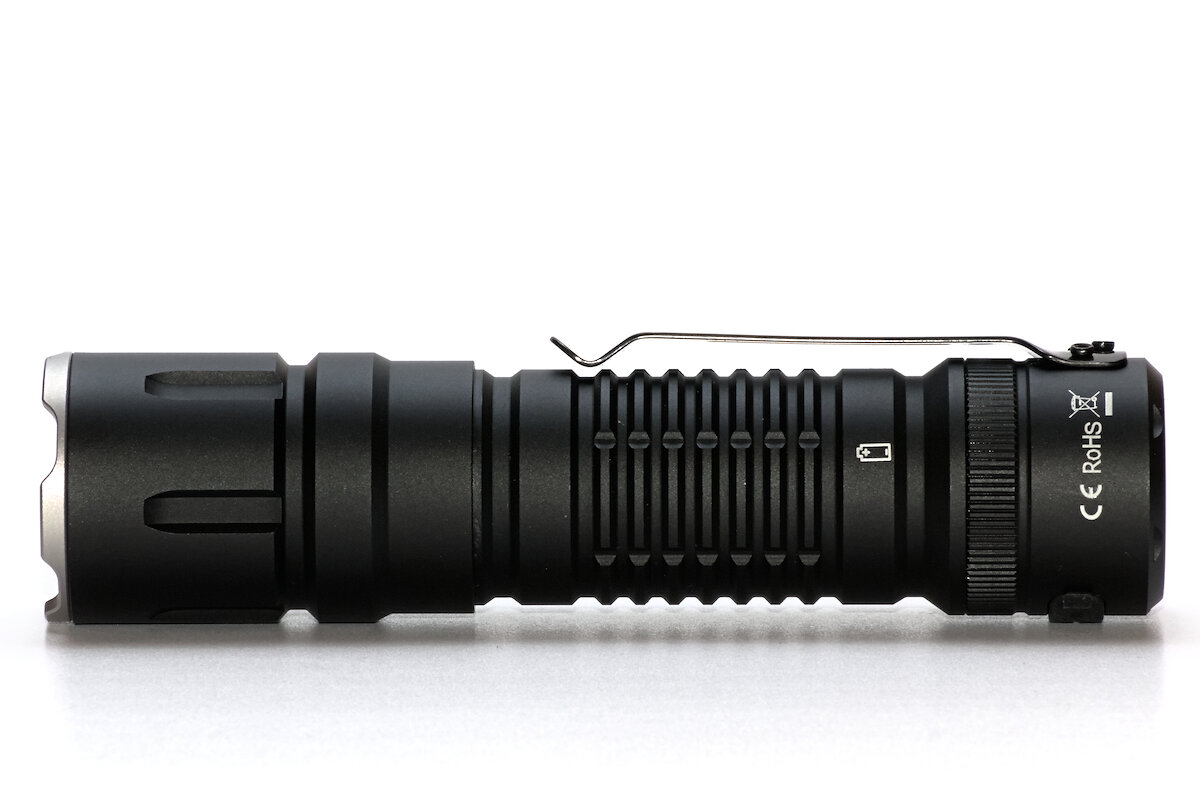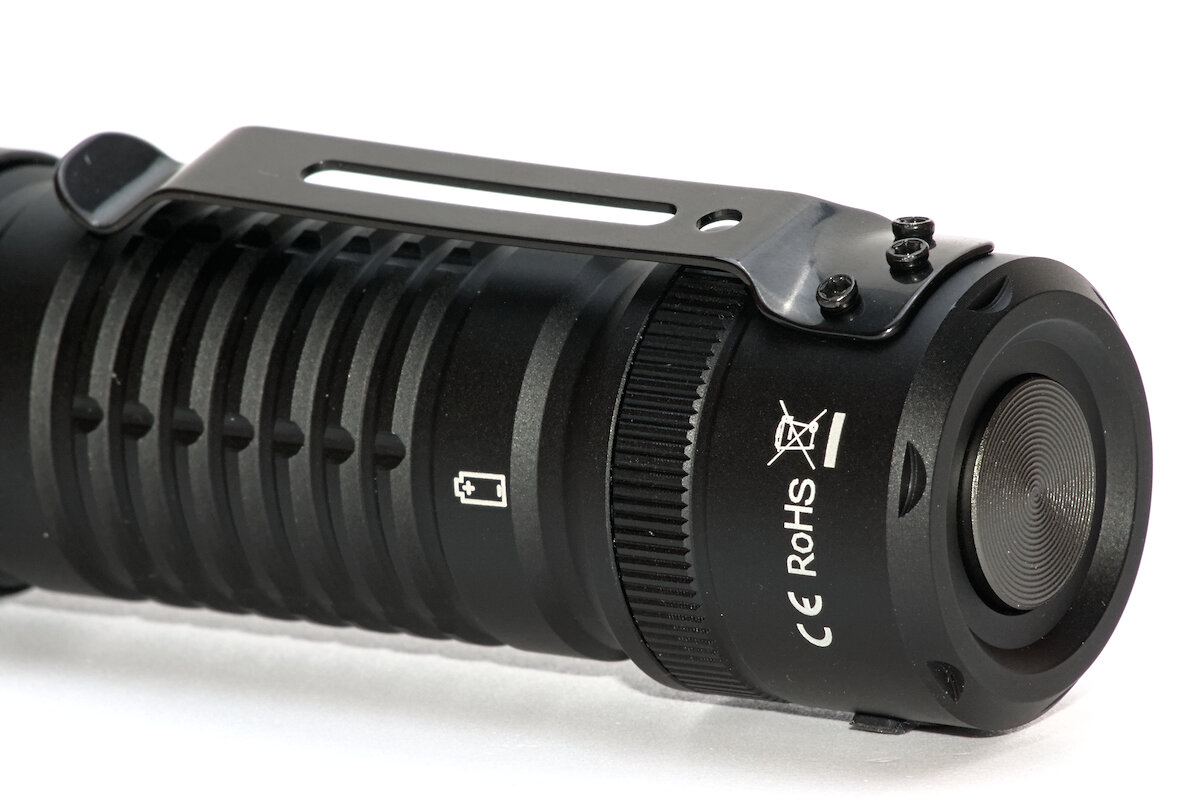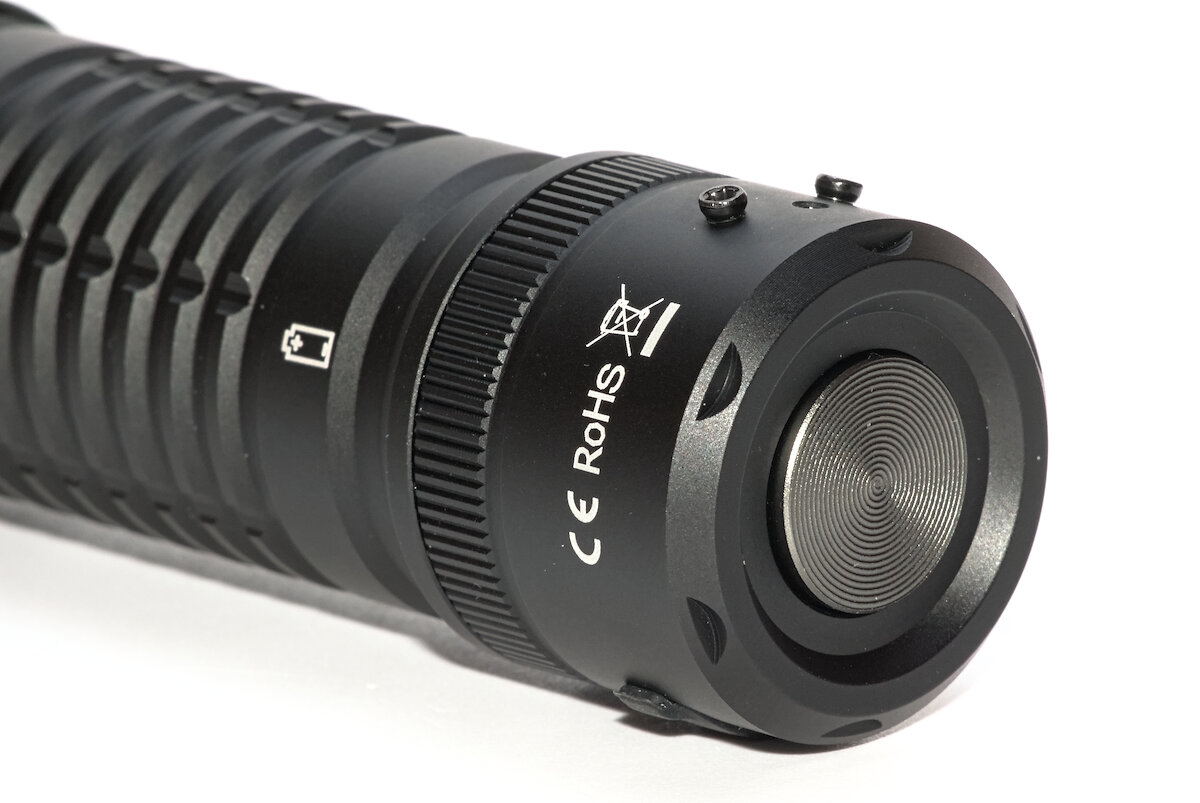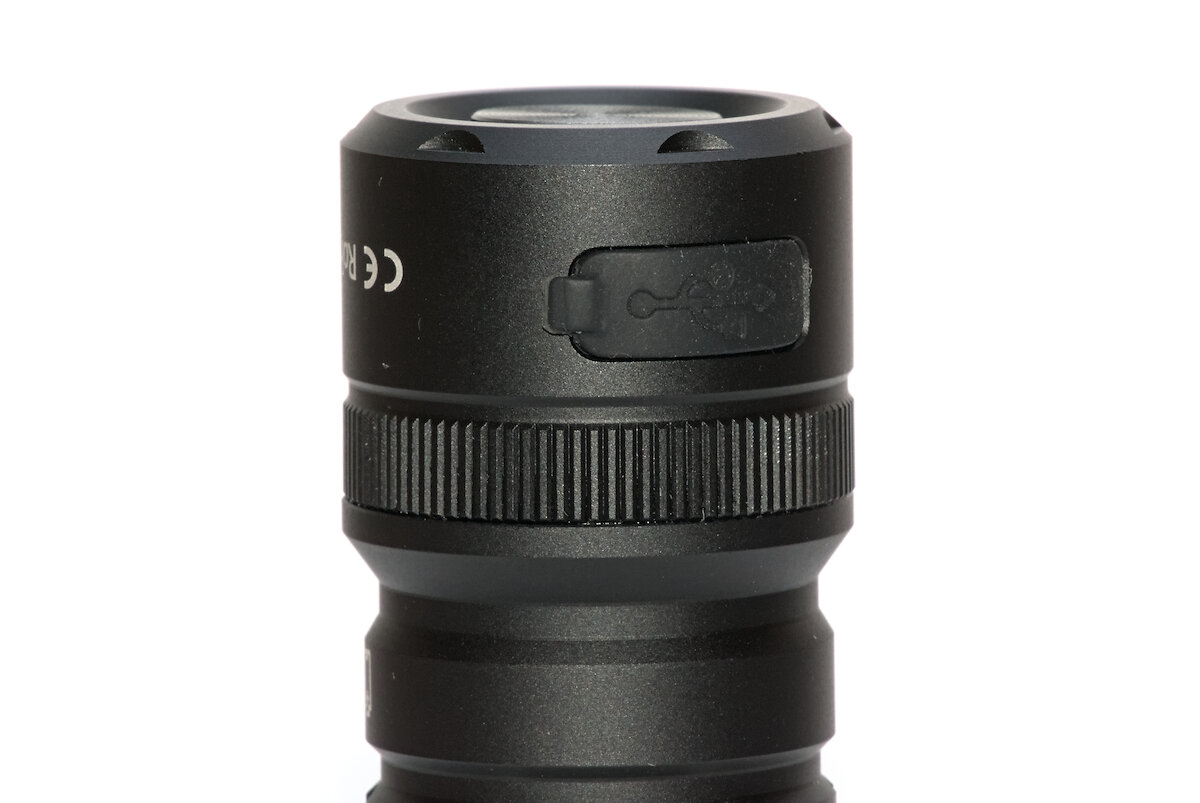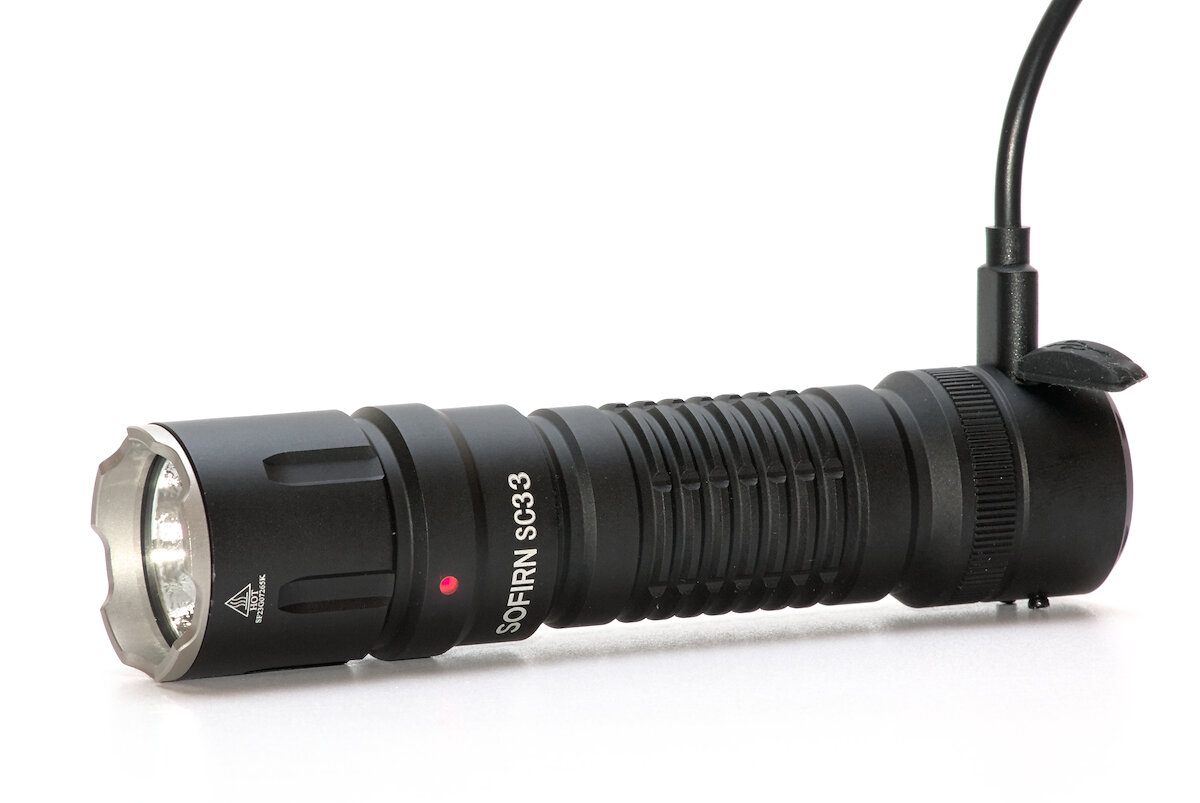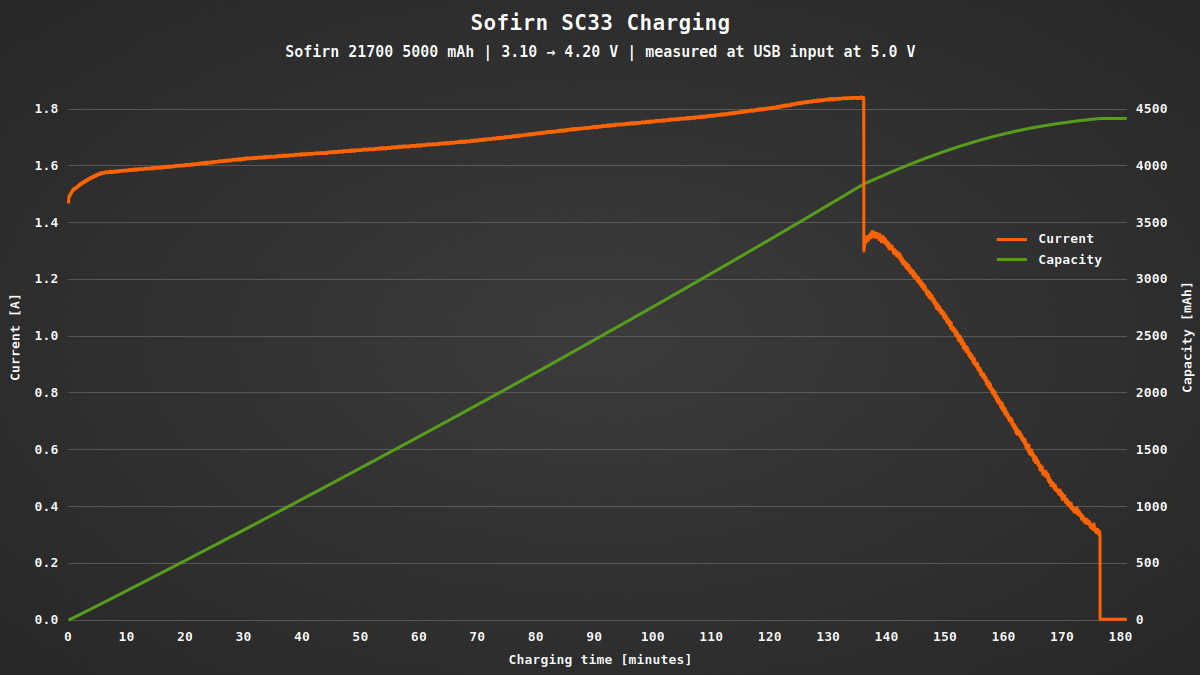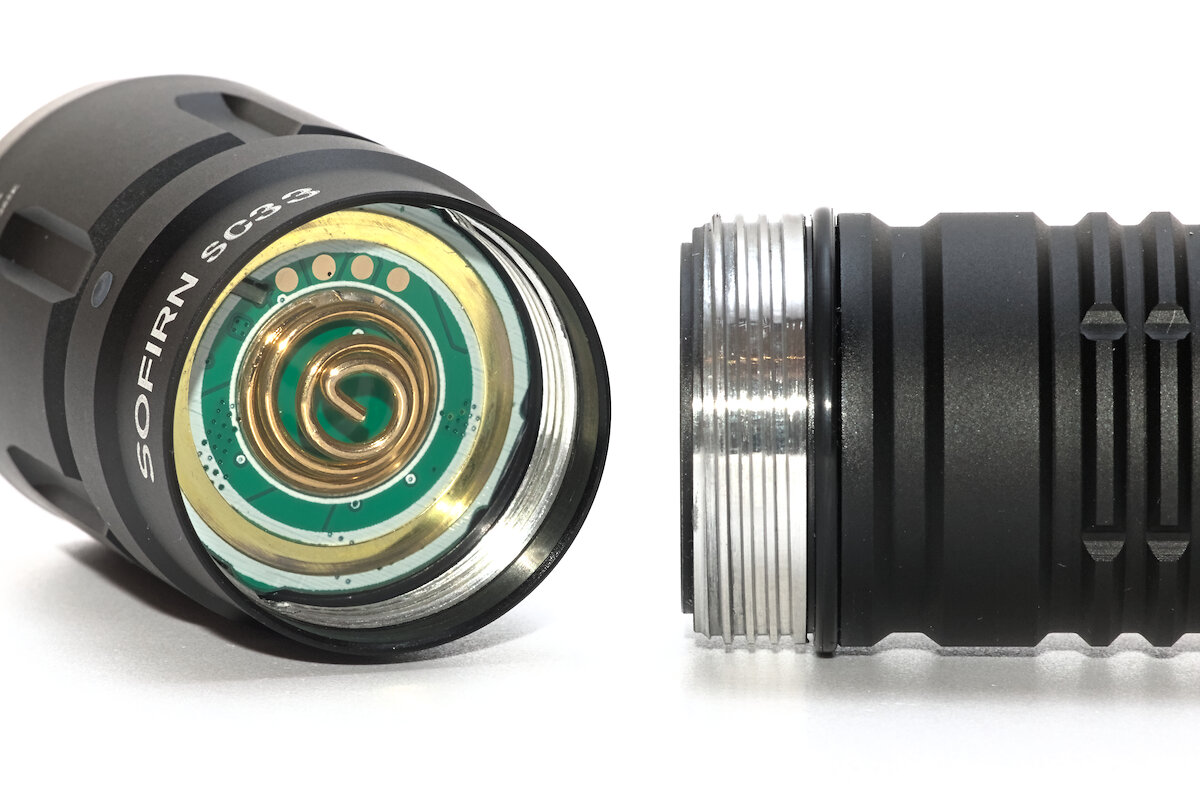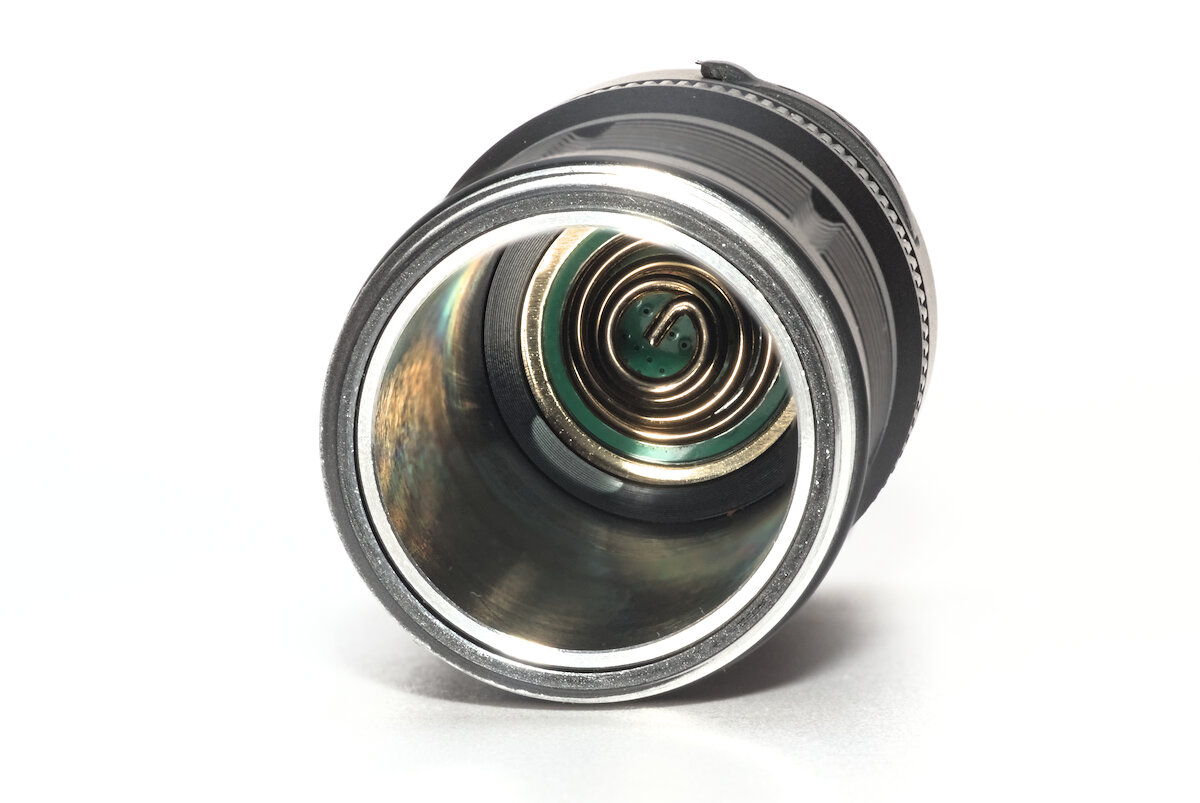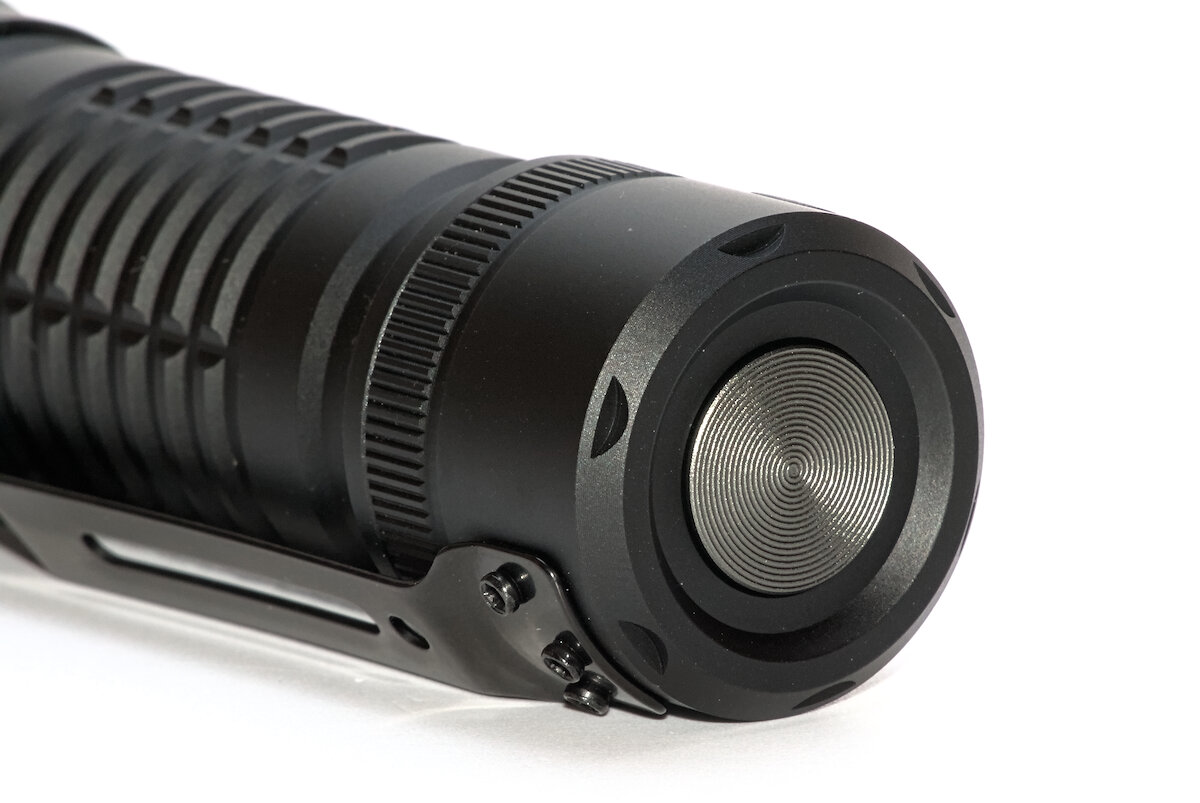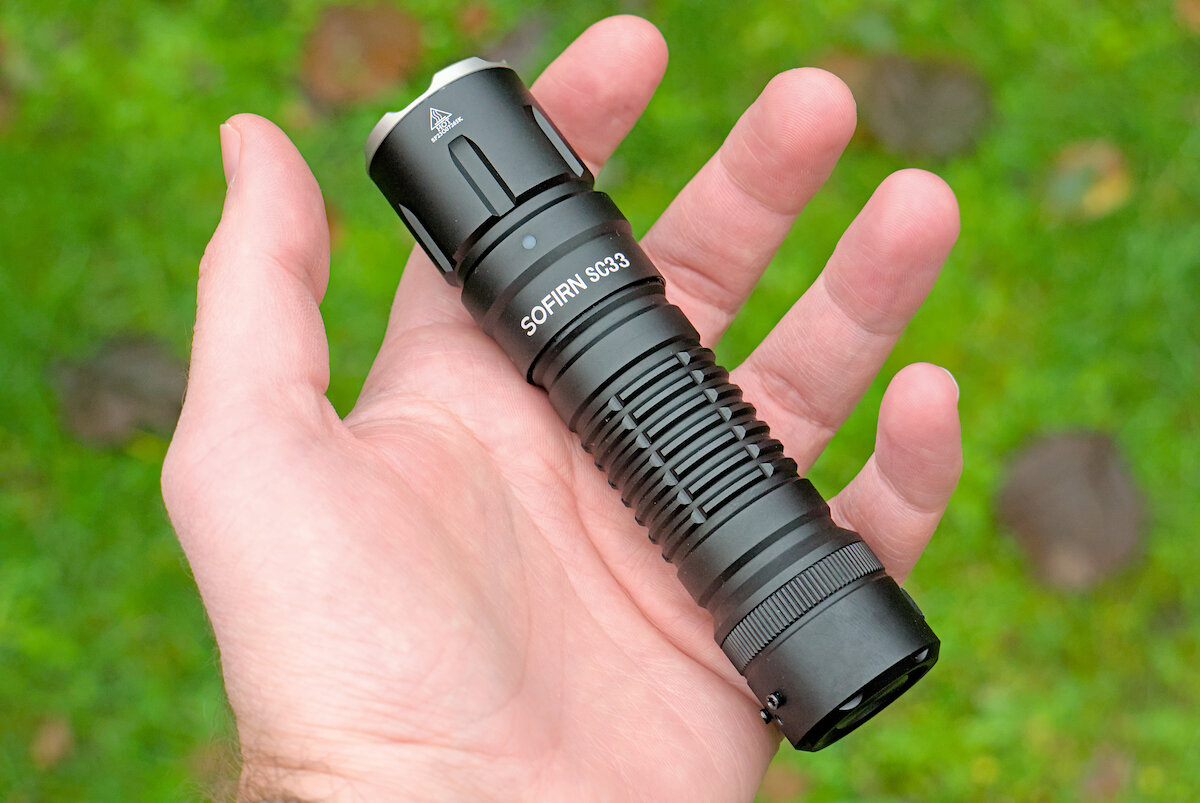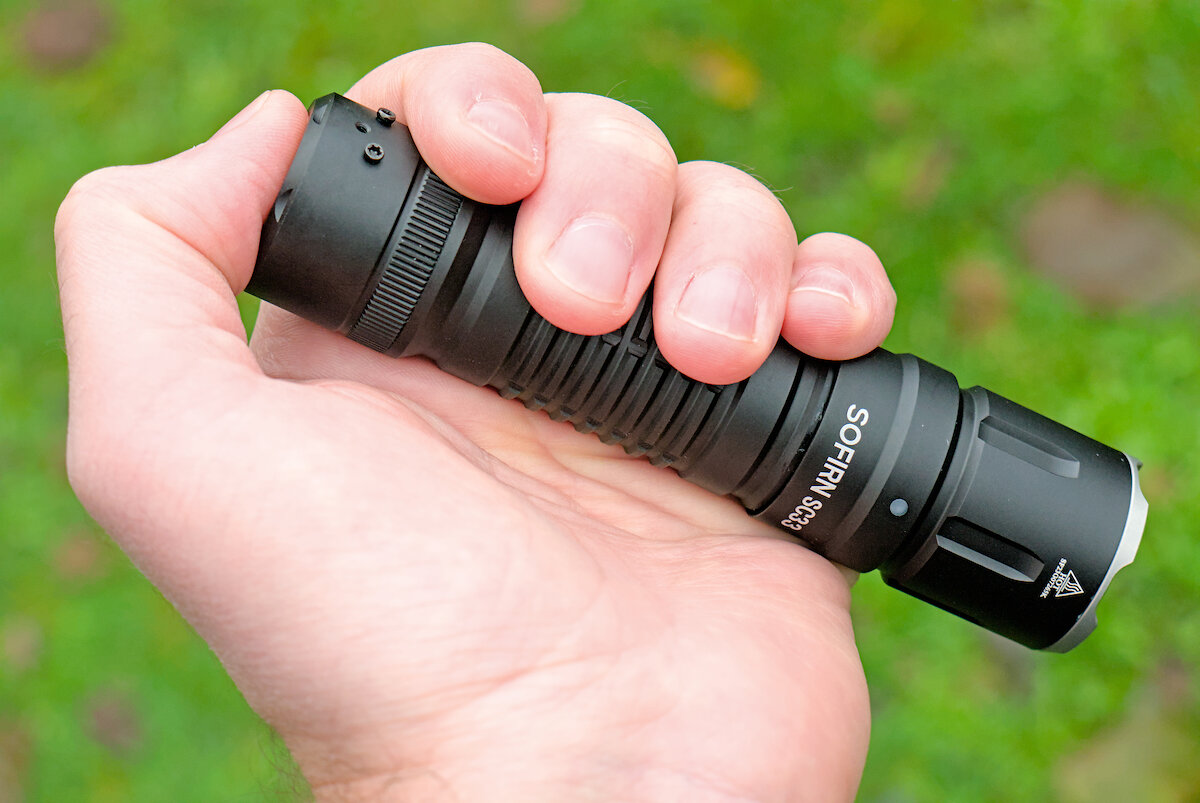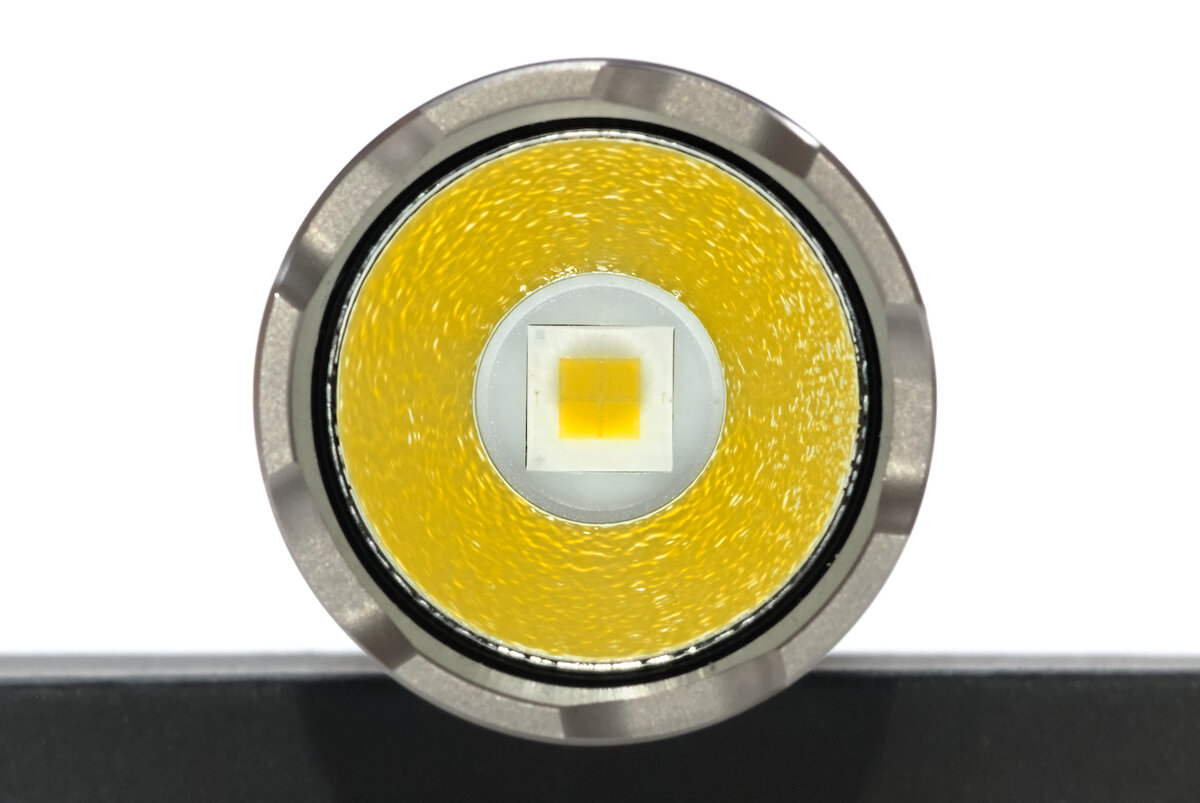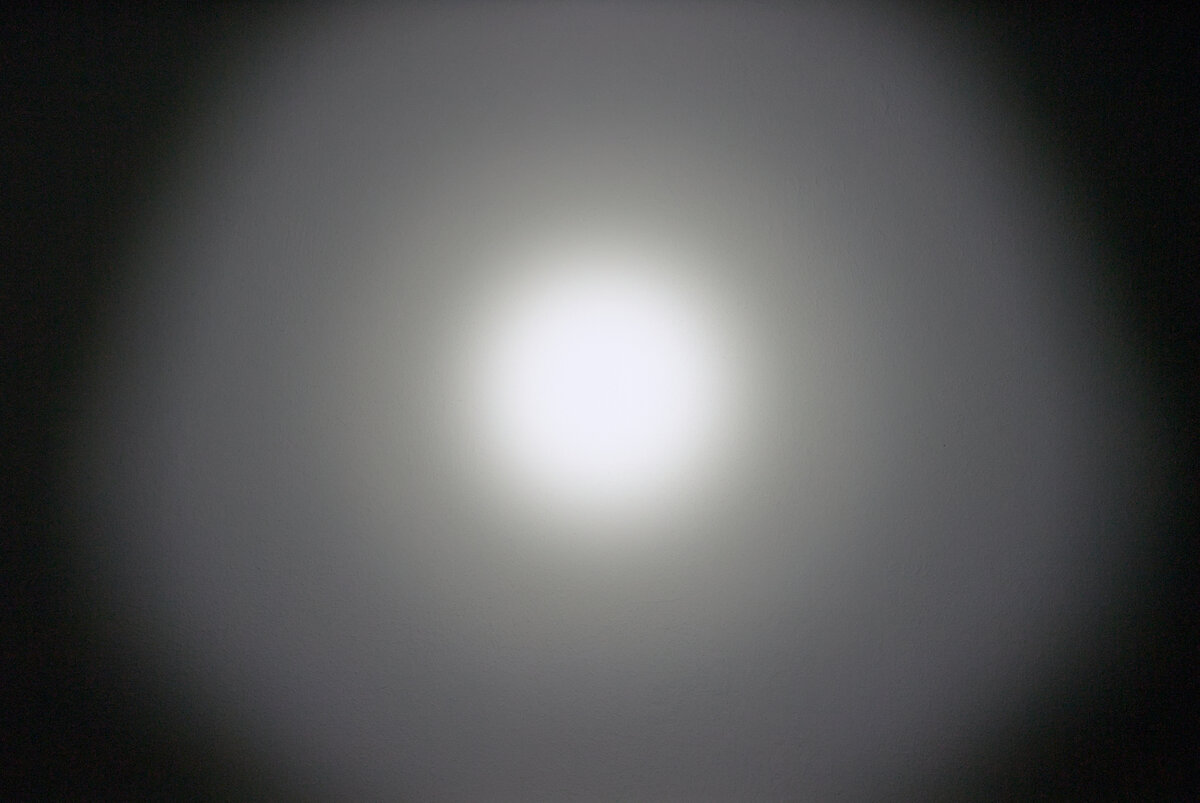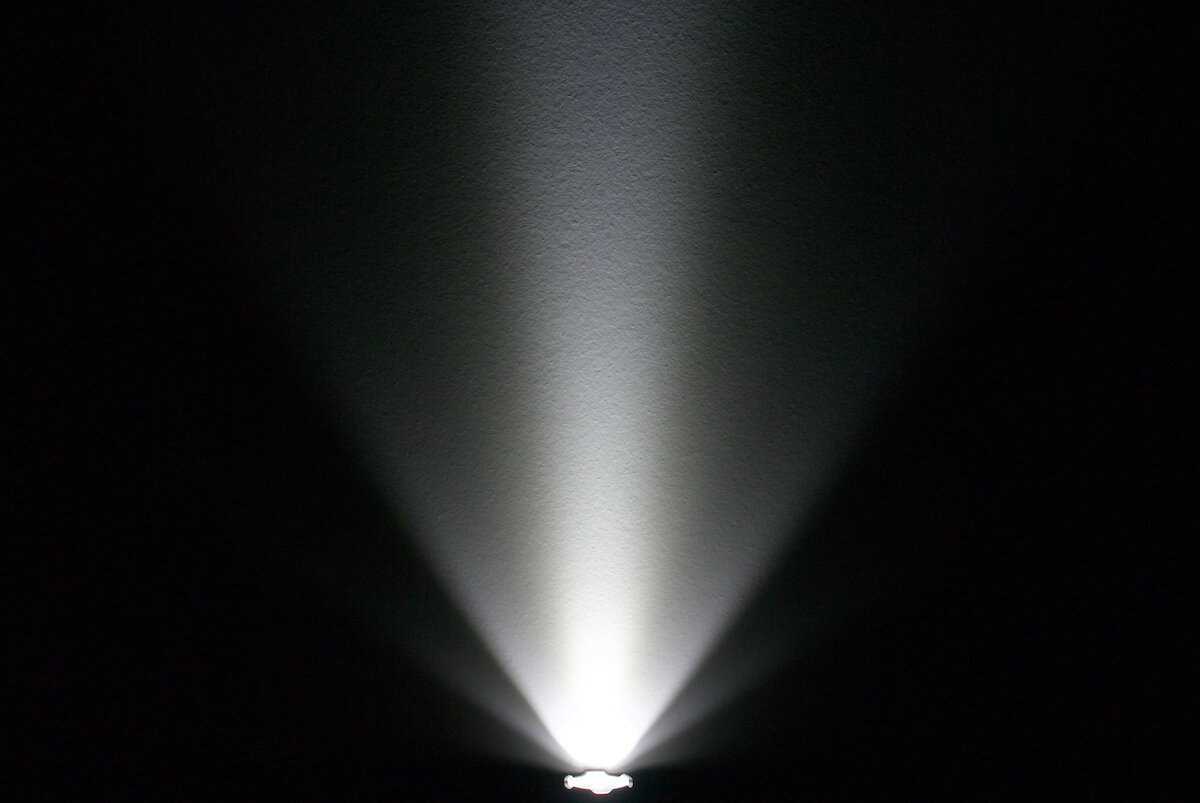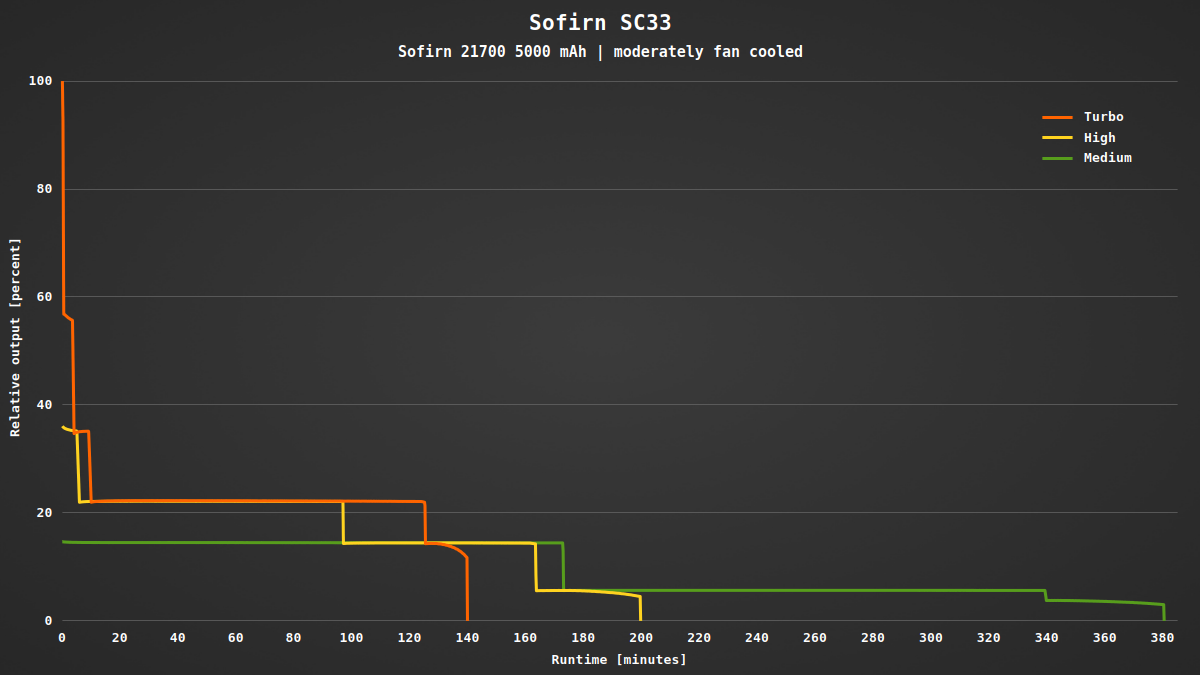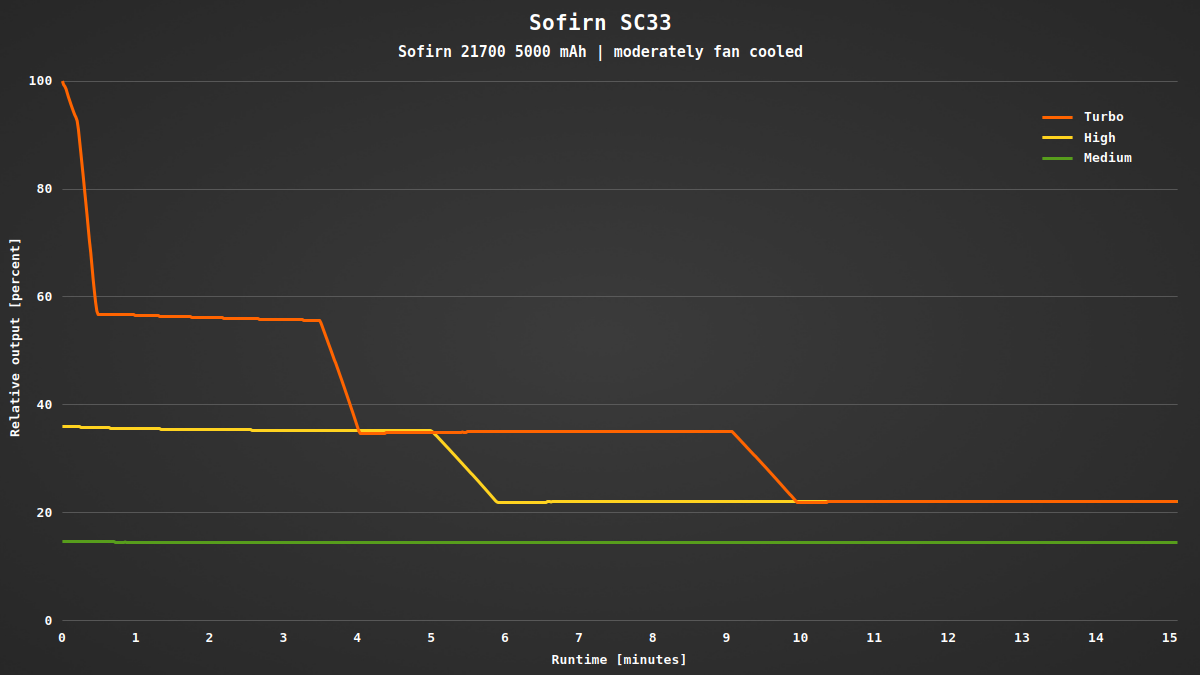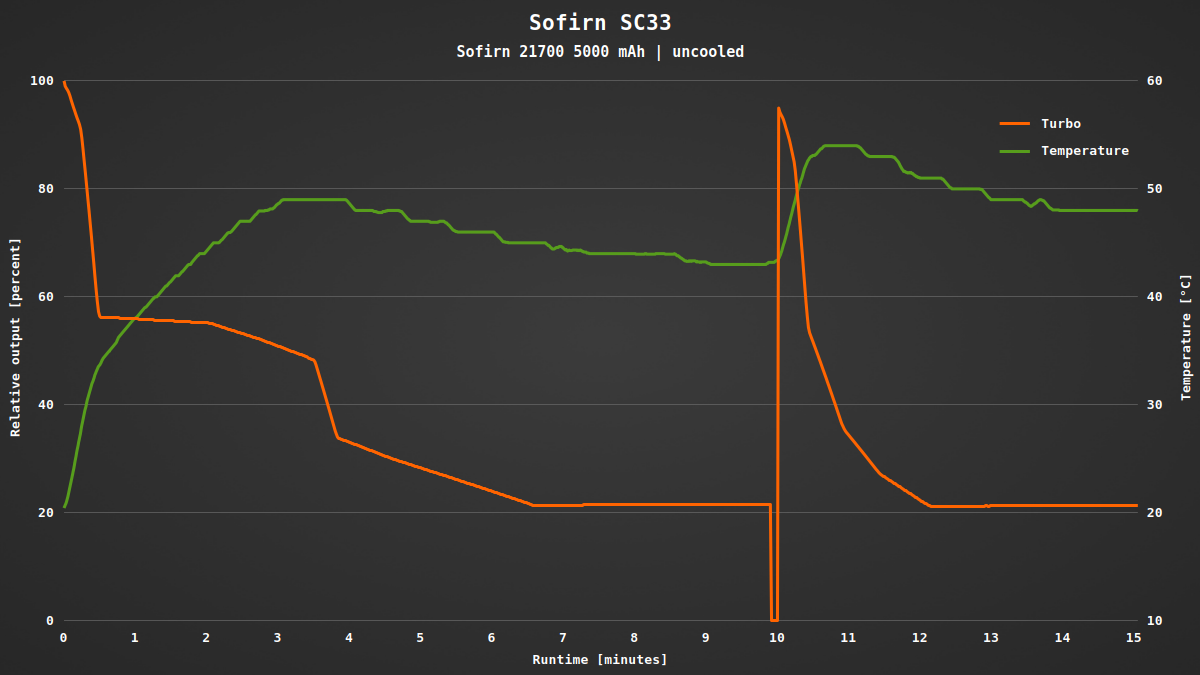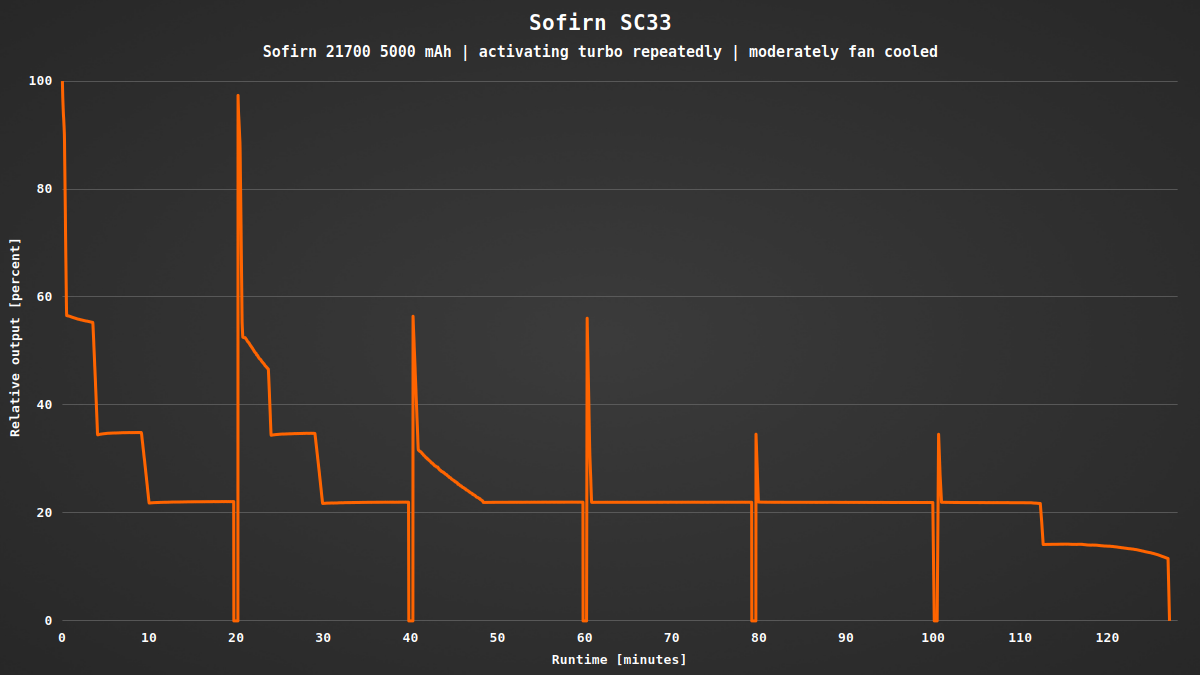A powerful flooder with Cree XHP70.3 HI, up to 5200 lm, electric tail switch, 21700 battery and boost driver? That’s the Sofirn SC33!
The flashlight was provided by Sofirn for this review, without any obligations. Thank you very much!
You can find the German version of this review on my website: SammysHP Blog › Sofirn SC33
Supplied parts and hardware
- 21700 Li-ion battery with 5000 mAh (3.70 V at arrival)
- Clip (attached)
- USB-C charging cable
- Lanyard
- 2x replacement o-ring
- Manual (EN, CN)
Length: 131,5 mm
Diameter: 32 mm
Weight: 120 g (plus 69 g for the included battery)
Not exactly sure what material the silver bezel is made from. Could be stainless steel, could be aluminum.
The texture of the battery tube feels very nice and allows for a secure grip. Much nicer than rough diamond knurling.
The clip is attached with three little screw, which makes it hard to lose. Mine came very loose, though. Not a lot of pressure.
A lanyard can be attached only at the hole in the clip.
I’ve removed the clip because this light is too large to be clipped in the pocket. But I kept two of the screws to prevent the light from rolling away.
The tailcap includes the switch, which is slightly recessed to allow tailstanding.
The USB-C charging port in the tailcap is protected by a flat silicone cover. Very nice, doesn’t open by accident. But the opening is a little small and some USB cables might not fit.
While charging the status LED at the head blinks red. When the battery is full, it switches to constant green. The flashlight cannot be used during charging.
It took slightly longer than three hours to completely charge the battery. The switch from CC to CV phase was a little strange, but otherwise charging was fine.
The tailcap is glued with the tailcap. Nice trapezoidal threads and a thick spring on the driver side.
Similar spring also in the tailcap. Here you can see the additional inner tube for the switch signal and charging.
Machining is good. Couldn’t find any significant sharp edges. The manual says it is rated ad IPX8 (submersible up to 1 m) and should survive drops of 1 m as well.
User interface and features
The flashlight is controlled by a nice, large, electronic tail switch. It’s made out of metal and has a spiral pattern. It has short travel and precise actuation.
| State | Action | Function |
|---|---|---|
| Off | 1C | Turn on (last used brightness, except Moon/Turbo/Strobe) |
| Off | 2C | Turbo |
| Off | 3C | Strobe |
| Off | 4C | Lockout |
| Off | 1H | Moon |
| On | 1C | Turn off |
| On | 2C | Turbo |
| On | 3C | Strobe |
| On | 4C | Switch between stepped / smooth ramping up/down |
| On | 1H | Change level (Eco → Low → Medium → High) or increase/decrease brightness |
| Moon | 1C | Turn off |
| Moon | 2C | Turbo |
| Moon | 3C | Strobe |
| Moon | 1H | Increase brightness |
| Turbo | 1C | Last level or turn off |
| Turbo | 2C | Moon |
| Turbo | 3C | Strobe |
| Strobe | 1C | Last level or turn off |
| Strobe | 2C | Turbo |
| Strobe | 3C | Change mode (Strobe → SOS → Beacon, not memorized) |
| Lockout | 1H | Momentary Moon |
| Lockout | 2C/3C | Unlock and turn on in last used brightness |
| Lockout | 4C | Like 2C, but also disable autolock |
In smooth ramping the direction is switched when the button is held again within 1.5 s after releasing it. Moon and turbo are not included in the ramp. Unfortunately the smooth ramp isn’t adjusted for linear perceived brightness, so low levels are rather quick, while high level are very slow. On the other hand the steps are very well spaced and switch in 500 ms intervals while the button is pressed.
After turning off the flashlight, the autolock feature locks the flashlight after about one minute. Often enough this is very annoying. But after an update by Sofirn, it is now possible to disable autolock. To do this, leave the lockout with 4C instead of 2C. Autolock will be disabled until you enter lockout manually or disconnect the power.
In the first five seconds after turning on the flashlight, a status LED at the head will show the approximate state of charge. On very low level, the LED will blink red permanently as long as the flashlight is turned on.
| Color | State of charge |
|---|---|
| Green | 75% – 100% |
| Green blinking | 50% – 75% |
| Red | 25% – 50% |
| Red blinking | < 25% |
Illumination
The light comes from a Cree XHP70.3 HI LED. The SC33 is available in two variants, 6500 K and 5000 K. I got the cool white 6500 K version for this review.
The LED is in a textured orange peel reflector. The combination of a large LED with the small, textured reflector creates a very floody beam. You can see a slight shift in color between spot and spill, but it’s way less compared to a domed HD emitter. CRI is not great, but instead you’ll get a lot of light.
Throw is mainly achieved by the pure power of this flashlight. Very floody, with some risk of blinding yourself from nearby objects.
Driver and runtime
Thankfully the SC33 got a boost driver for its operation. Well, not much of a choice when using an XHP70.3 LED with a single Li-ion battery. This has the side effect of allowing a very constant brightness for most of the battery life. My measurement with the oscilloscope has shown no sign of PWM.
| Mode | Brightness¹ | Runtime¹ | Intensity¹ (Throw²) |
|---|---|---|---|
| Turbo | 5200 lm | 1.5 h | 26 750 cd (327 m) |
| High | 1800 lm | 1.85 h | 8 900 cd (189 m) |
| Medium | 750 lm | 5.3 h | 3 617 cd (120 m) |
| Low | 300 lm | 11.3 h | 1 417 cd (75 m) |
| Eco | 50 lm | 45 h | 243 cd (31 m) |
| Moon | 10 lm | 300 h | 53 cd (15 m) |
¹ According to manufacturer ² ANSI FL1
Not sure if this flashlight really outputs 5200 lm, but a few hundred lumens more or less aren’t visible anyway in this range. Official runtimes are sometimes longer, sometimes shorter than reality. Turbo brightness is quickly reduced after less than half a minute.
In addition to the timed stepdowns there is also a temperature protection, which reduces the output earlier if necessary. (The temperatures shown here might be a little low because I wasn’t able to get a good coupling with the sensor. The IR thermometer reported about 4 °C more when the flashlight was hot.)
Often asked: How long is it possible to use turbo? In the following tests I’ve activated turbo repeatedly every 20 minutes. Even without knowing the voltage of the battery you can see that full turbo is only available with a full battery. But the brightness after the stepdown is available up to the end.
The outer battery tube is connected directly with the spring in the tailcap. When the switch is pressed, it connects the negative with the inner tube via a 5.1 kΩ resistor. If a USB power supply is connected, the inner tube is connected with the positive voltage. That’s why the switch can’t work with a charger connected.
Because the tailcap is glued, I wasn’t able to get a good contact with the three contacts in the head. Thus I don’t have any current measurements. While measuring the quiescent current, it switched between 1850 and 90 µA every few seconds. Eventually the flashlight will turn off at low voltage to protect the battery, but I didn’t measure the exact voltage due to the unreliable connection.
Conclusion
Looking for a powerful flooder, with simple user interface and easy to find tail switch? Then give the Sofirn SC33 a try! With its boost driver it is able to achieve constant low to medium brightness for a long time and up to 5200 lm in turbo.
There is not much to complain. It is a little large for a 21700 flashlight and the autolock should be off by default. But overall I am satisfied with the SC33.
Got curious? Sofirn SC33 on Amazon US or directly from the manufacturer (less expensive, shipped from China).
